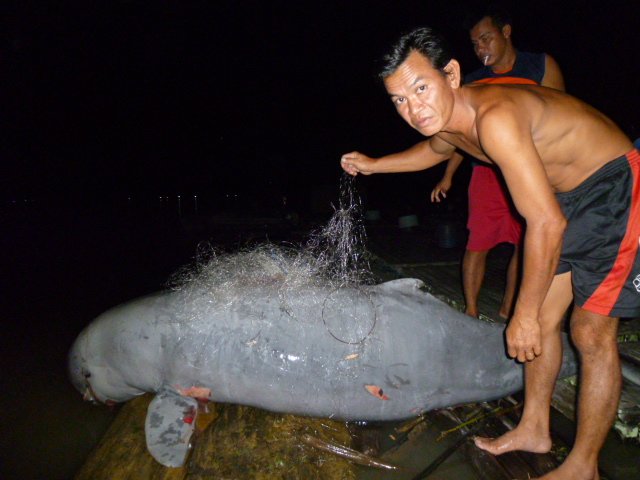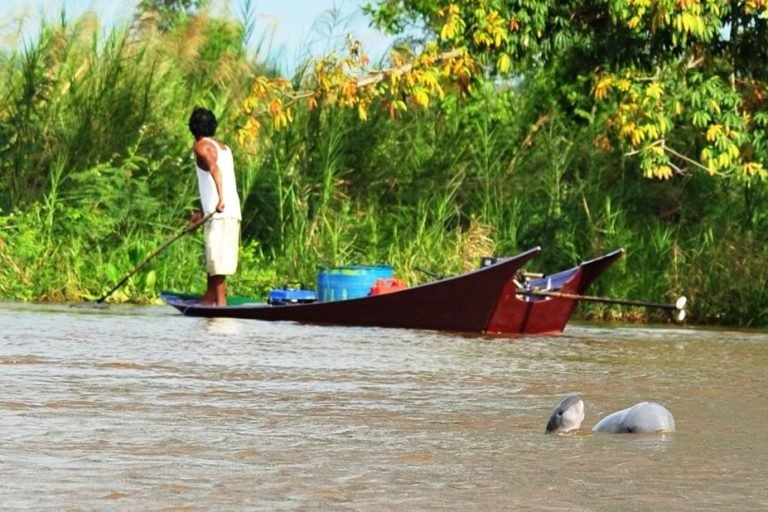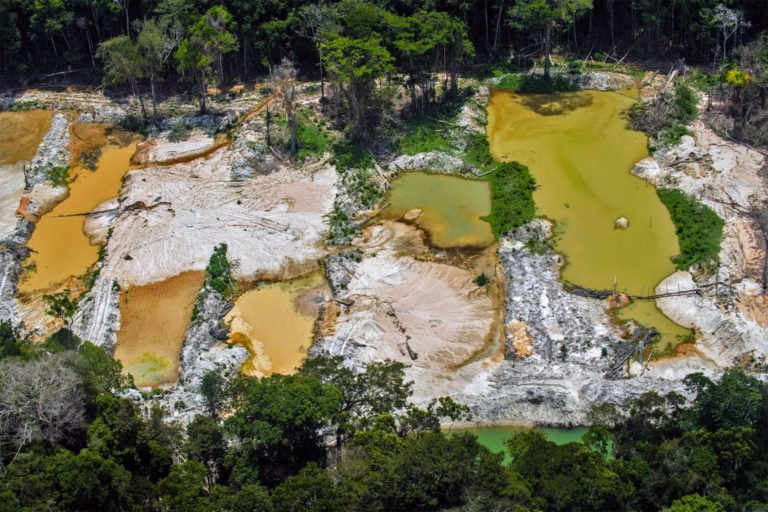- Indonesia’s fisheries ministry is working with a conservation NGO to draw up plans prohibiting fishing gear considered dangerous to critically endangered Irrawaddy dolphins in the Mahakam River in Borneo.
- The prohibition will apply to a stretch of the Mahakam that was designated a conservation area earlier this year and that’s home to 90% of the estimated 80 Irrawaddy dolphins in the Mahakam.
- Among the practices they’re seeking to ban are fishing with a type of gill net known as rengge, electrofishing, poison fishing, and fixed-net fishing known as sawaran and kombongan.
- Local fishers are said to be supportive of the plan: “They want to continue fisheries but they also want to get rid of unsustainable fishing … because they care about the dolphins as well.”
JAKARTA — One of the most threatened population of Irrawaddy dolphins in Asia is set to get a much-needed reprieve as officials in Indonesia roll out a ban on unsustainable fishing gear in a key stretch of river.
The Bornean population of the species, Orcaella brevirostris, is found in the Mahakam River, of which an upstream watershed spanning 42,668 hectares (105,435 acres) was in August declared a conservation area by the fisheries ministry.
This new designation will severely limit shipping traffic in this stretch of water, but will allow fishing to some degree. To that end, the ministry is working with conservationists to draw up a management plan that will allow sustainable fishing while prohibiting unsustainable and destructive practices that have been identified as a threat to the dolphins and other species.
“It is important for the management plan to get finalized in the next few months, as quickly as possible, and I think this is a huge step,” said Danielle Kreb, scientific program manager for the Conservation Foundation for Rare Aquatic Species of Indonesia (YK-RASI), the NGO working with the fisheries ministry.
Among the practices they’re seeking to ban are fishing with a type of gill net known as rengge, electrofishing, poison fishing, and monopolizing fisheries, where the entire cross-section of the river is rigged with a net, allowing no room for fish or other animals to pass through, Kreb said.
The Mahakam population of Irrawaddy dolphins is estimated at just 80 individuals and is considered critically endangered. Ninety percent of the dolphins inhabit the newly designated conservation area, according to YK-RASI.
At the same time, the area is also a key source of livelihood for fishers from 27 villages. The inevitable consequence is that the dolphins risk getting caught in the more destructive fishing gear — about four of them annually, according to the fisheries ministry.
Gill nets, for instance, can entangle dolphins underwater, preventing them from surfacing to breathe, Kreb said. Electrofishing, in which fishers use a rod charged by car batteries or even a generator to stun large numbers of fish, can be deadly for dolphins too if they happen to be feeding on the fish.
“And [electrofishing] is also dangerous [to the fishers] because some people have died from using it. It’s a serious business and the tools get more sophisticated because they sometimes get imported, I heard from Thailand, for example,” Kreb said.

Kreb said the fishers support the establishment of the conservation area and the proposed ban on the destructive gear, but will need assistance to switch to more sustainable fishing devices, such as traps, cages and longlines. She noted that about 200 fishers use gill nets when water levels are high, but the number triples during the dry season, when more opportunistic fishers also deploy gill nets. As for electrofishing, Kreb said local law enforcers have confiscated about 200 electrofishing units this year alone.
“What we have found after discussions with fishing groups is that they want to continue fisheries but they also want to get rid of unsustainable fishing, like monopolizing gear, the ones that are illegal like electrofishing, poison fishing, gill nets, because they care about the dolphins as well,” Kreb said.
“It’s like they give and take, and it’s a good example of how many people can collaborate for a common purpose, which is to sustain the natural resources in the area by not depleting the fish resources,” she added.
The Mahakam River runs 980 kilometers (610 miles) from its headwaters in the heart of Borneo’s remaining thick rainforest, past a mosaic of oil palm plantations, coal mines and logging concessions, before ending in a delta on the Makassar Strait, on Borneo’s east coast. The freshwater dolphins of the Mahakam, known locally in Indonesia as pesut, represents one of just three riverine populations of Irrawaddy dolphins in the world, with the other two in the Mekong and the Irrawaddy rivers.

The dolphins have been driven from much of their range to this particular stretch of the Mahakam because of changes to the flow and quality of river water as a result of the clearing of peat forests for oil palm plantations, Kreb said. Between 2002 and 2019, East Kalimantan lost 9% of its primary rainforest, or 1.13 million hectares (2.8 million acres), according to Global Forest Watch. The dolphins’ current range also happens to be the busiest stretch of the Mahakam, with constant large vessel traffic, particularly coal barges.
The fisheries ministry on Dec. 8 signed an agreement with YK-RASI, appointing the group its partner in exchanging data on the conservation area, helping disseminate information about policies, and conducting monitoring and patrolling efforts. Its remit does not, however, include law enforcement.
“The whole idea behind the area is not only for the conservation of dolphins but also we want to achieve an ecosystem where the communities can thrive inside the conservation area as well,” Kreb said.
Basten Gokkon is a senior staff writer for Indonesia at Mongabay. Find him on Twitter @bgokkon.
FEEDBACK: Use this form to send a message to the author of this post. If you want to post a public comment, you can do that at the bottom of the page.












